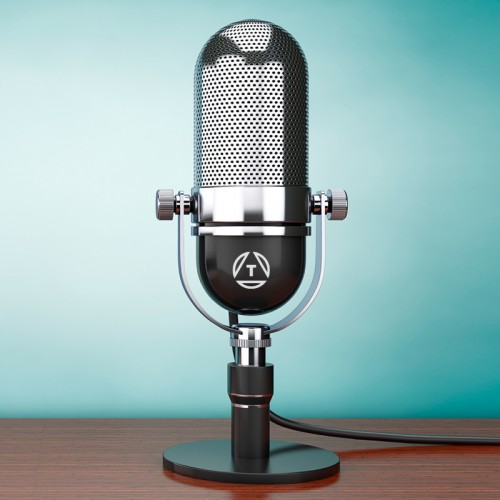
Being unable to come into contact with other people has a way of changing habits. Some of those habits are how you create content and reach your audience.
People have been entertaining and educating eachother since the dawn of time. At first it was oral stories, then came written language and books, then eventually radio and television. Just as streaming services brought television to the internet, podcasts brought radio online as well. And each time we invent a new way of communicating, marketers find a way of using it.
What is a Podcast?
In the simplest of terms, podcasts are essentially radio programming via the internet.
The podcast as we know it began in the early 2000s as people began uploading audio files to RSS feeds which allowed listeners to easily download new episodes. Once devices like the iPod came around, it made it even easier to download and listen on the go. Fun fact: the term “podcast” is actually a portmanteau of iPod and broadcast.
Podcasts can cover any topic from murders to recapping every episode of Bonanza (yes, both of those things are true). Just about any topic you can think of has a podcast about it. But that doesn’t stop people from creating new and interesting ways to present their personalities, interests, and hot takes.
Given that podcasts cover specific topics, it gives marketers the opportunity to tap into an audience with a specific interest. With the right podcast you can easily reach an already captivated audience willing to try any product mentioned.
Types of Podcast advertising
Podcast advertising is similar to other mediums, no one has reinvented the wheel here. Just as you have recorded spots and live readings in radio, you have the same general options with podcast advertising. Most podcast advertising is based on podcast networks or podcast advertising networks, much like placing ads on television.
These networks allow you to more easily distribute your advertising to different shows or find just the right show for your audience. They also provide valuable data such as download and listen counts.
In most cases you are going to find two types of podcast ads: Live Readings and Pre-Recorded spots.
Live Readings
A live reading means the host of the podcast is reading your ad copy (with some personal flair) on the podcast itself in the form of a break. This option allows the spot to be personalized for the podcast and carries a bit more appeal for the audience.
Since the audience has spent time building a relationship with the host, they are more likely to listen to them read the spot and much more likely to further investigate the product mentioned.
Live readings benefit from the added personality that comes from the host(s) reading the copy on the show itself. They are able to mix your spot in with their show more easily.
Pre-Recorded Spots
Pre-recorded spots are similar to traditional radio spots in that they are recorded outside of the podcast and inserted within the episode. These spots can also be used for several shows at once since they are not host specific.
What these spots might lack in personality they make up for in control.
These spots give you much more control of the final spot production since you can dictate how the copy gets read and limit the conversation around it.
Where do podcast ads get played within a podcast?
Once you’ve determined the type of recording you want, it’s time to figure out where in the podcast you want the spot played. In most cases you are going to have three options as far as placement is concerned: Pre-Roll, Mid-Roll, Post-Roll.
Each of these placement options will often come at different price points since each will be heard by a different number of audience members, much like dayparts in television or radio advertising. As with other digital media, people tend to drop off as time passes. An ad at the beginning of a podcast will likely convert better than an ad at the end of the podcast. Of course, there are many things to consider when choosing placement like budget, frequency, listener counts, etc.
Pre-Roll
Pre-Roll ads are placed at the beginning of the podcast before the show begins.
Mid-Roll
Mid-Roll ads are placed in the middle of an episode.
Post-Roll
If you haven’t caught onto the pattern at this point: a Post-Roll spot is placed at the end of a podcast.
How You Can Use Your Own Podcast
Of course advertising isn’t the only option you have for podcasts. You could always create your own.
Creating your own podcast allows you to appear as a thought leader in your industry by providing consistent content that people want to listen to and is easy to digest. Podcasting adds another layer of diversity to your content marketing efforts and give you an additional touchpoint with your audience.
The trick to successfully utilizing podcasting is align with your audience and provide them with consistent content that adds some sort of value to their lives and keeps them coming back for more. You know, like all content. What happens when content is creating that doesn't include these aspects? No one listens. Shouting into nothingness is easy to do.
Podcasts Add To Your Marketing Toolbox
Much like videos and blogging, podcasting is another content type you can utilize to increase your marketing efforts. Whether you use other’s podcast as an advertising platform or create your own podcast, you should always consider your audience before taking the next step. Is podcasting something they are interested in? What podcasts are they currently listening to?
If you do your research, you should be able to uncover what your audience is into and that will dictate your next course of action.
Of course we are always here to help if you need it.



